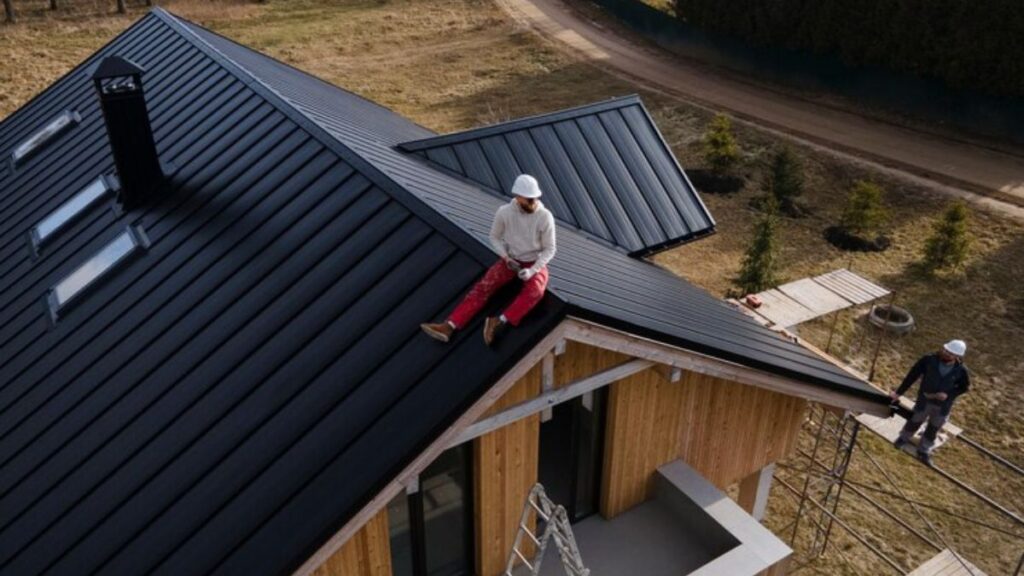A damaged roof can lead to major problems for your home, from leaks to structural issues. If you’ve been noticing signs that your roof is not performing like it used to, it’s time to assess whether a replacement is needed. Ignoring roof problems can lead to costly repairs down the line, so staying alert to early warning signs is crucial. Here are seven signs that you should not ignore when determining if it’s time for a roof replace.
1. Missing or Damaged Shingles
Shingles are the first line of defense against the elements, so if they are missing or damaged, your roof is at risk. Wind, hail, and debris can cause shingles to loosen or break off. Check your roof for any noticeable gaps or patches where shingles have been displaced. When it comes to damaged shingles, assistance with roof repairs can prevent further deterioration and protect your home from damage. If you find a significant number of damaged or missing shingles, it could be a sign that the roof is no longer structurally sound and needs replacing.
2. Leaks or Water Damage
If you’ve noticed water stains on your ceiling or walls, leaks are likely the cause. Leaks are often a sign that your roof’s protective layer has been compromised. This can occur from damaged shingles, flashing, or a buildup of debris blocking water flow. Leaks that persist can cause extensive damage to your home’s interior, leading to mold, rot, and expensive repairs. If you spot any leaks, a roof replacement might be necessary to prevent further damage.
3. Age of the Roof
The age of your roof is one of the most important factors to consider when determining if it’s time for a replacement. Most asphalt shingle roofs last between 20 to 25 years. If your roof is approaching or has surpassed that age, it’s likely time to start planning for a replacement, even if there are no visible issues. Older roofs are more prone to damage and may not be as effective at protecting your home as newer materials.
- Decreased Effectiveness Over Time: As your roof ages, the materials start to break down and lose their ability to protect your home effectively. Even if there are no immediate signs of damage, an aging roof may not perform well under harsh weather conditions.
- Diminishing Curb Appeal: An old roof can significantly affect the appearance of your home. As shingles age, they may begin to fade, curl, or develop algae stains, which can make your home look worn and unkempt.
4. Curling or Buckling Shingles
Shingles that are curling or buckling are a clear indicator that your roof has reached the end of its lifespan. This can happen for various reasons, including age, moisture, and poor ventilation. When shingles begin to curl or lift, they no longer provide proper protection against rain, wind, or other weather conditions. A roof with curling or buckling shingles is highly vulnerable to further damage and may require a complete replacement to restore its integrity.
Homeowners living in eastern Maricopa County frequently opt for roof replacement in Scottsdale AZ when signs of curling shingles start to spread across large sections of the roof. Acting early helps them avoid water intrusion and more costly structural repairs down the line.
5. Granules in Gutters
Asphalt shingles are coated with granules to protect against UV rays and wear. If you notice granules in your gutters or around your home’s foundation, it’s a sign that your shingles are deteriorating. Excessive granule loss indicates that the shingles are no longer effective at protecting your home. If this is happening, it’s a clear sign that the roof’s lifespan is nearing its end, and a replacement should be considered.
6. Increased Energy Bills
A well-maintained roof helps regulate your home’s temperature, keeping it cool in the summer and warm in the winter. If your roof is damaged or inefficient, your HVAC system has to work harder to maintain comfortable indoor temperatures. This often leads to an increase in your energy bills. If you’ve noticed a sudden spike in your heating or cooling costs, a damaged or old roof may be to blame. A roof replacement can improve energy efficiency and help you save on utility costs in the long run.
7. Sagging Roof Deck
A sagging roof deck is a serious concern and could be a sign of structural damage. This usually occurs when there’s a build-up of moisture under the roof or if the roof’s support structure has weakened over time. A sagging roof not only compromises your home’s safety but can also lead to larger issues if left untreated. If you notice any sagging or unevenness in your roof, it’s important to address it immediately, as it often requires a full roof replacement to restore the structural integrity of your home.
Your roof is one of the most important components of your home’s structure, and addressing issues as soon as they arise can prevent costly repairs down the road. If you’ve noticed any of the signs above, it’s time to consider replacing your roof. Don’t wait until the damage gets worse. Taking action early will protect your home and give you peace of mind knowing your roof is functioning properly.







